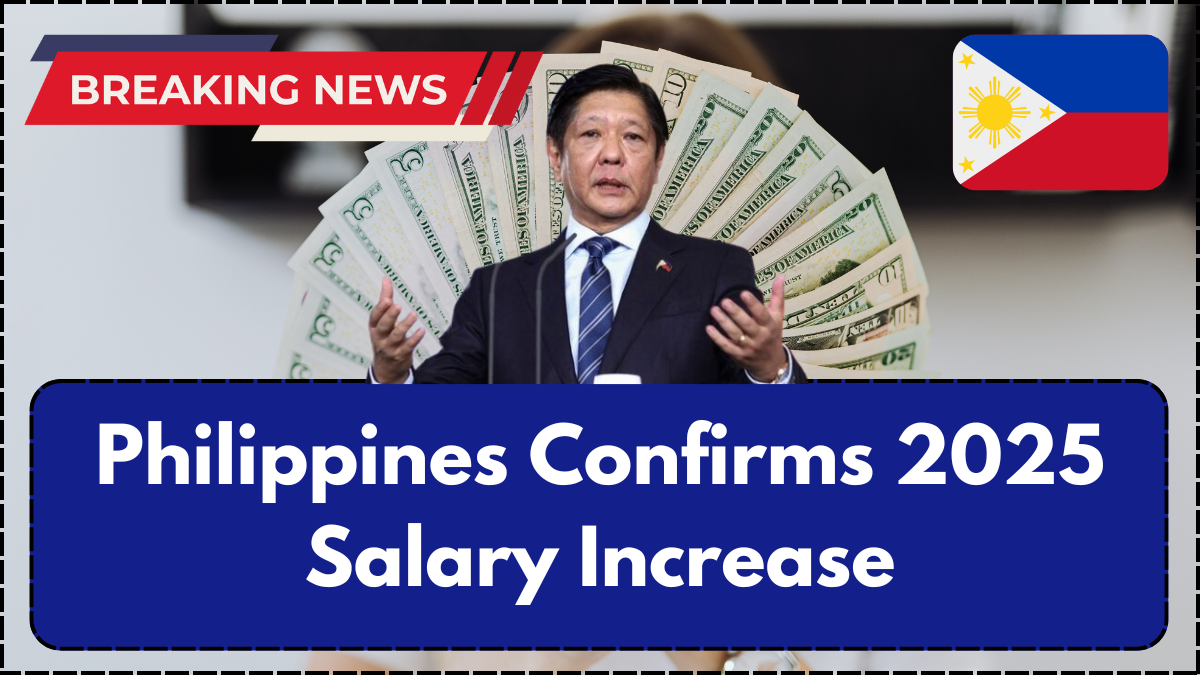The Philippine government has announced salary adjustments for both public and private sector employees starting in 2025. This initiative is aimed at improving workers’ financial security, addressing inflation, and promoting fair compensation across industries. The changes will be implemented gradually to ensure economic stability while enhancing employee livelihoods.

Government Employees: Salary Adjustments and Benefits
Under the Salary Standardization Law VI (SSL VI), government workers will receive structured salary increases spanning from 2024 to 2027. This phased approach guarantees fair wages aligned with employees’ roles while ensuring the government’s fiscal responsibility.
Incremental increases will be introduced each year to maintain economic balance and provide sustainable financial growth for public sector employees.
Understanding the Salary Grade System
The Salary Grade (SG) system in the Philippines classifies government positions into different salary scales. This structured system ensures fair compensation based on job complexity, seniority, and responsibilities.
With 33 salary grades in total, higher positions receive greater remuneration due to increased responsibilities. The Salary Standardization Law VI mandates regular salary updates to align wages with the economic climate.
For 2025, approximately ₱70 billion has been earmarked for salary adjustments. In addition, a ₱7,000 annual medical allowance will be granted to all government employees to help with healthcare expenses, further supporting their financial well-being.
Salary Increases in the Private Sector
Private sector employees will also benefit from wage increases in 2025. Analysts predict an average salary increase of 5.8%, aimed at helping businesses retain skilled professionals, boost workforce morale, and counteract inflationary pressures.
Salary adjustments in the private sector will vary depending on industry performance, market demand, and company policies. Sectors such as technology, finance, healthcare, and manufacturing are expected to experience the most significant wage growth.
Minimum Wage Variations Across Regions
The minimum wage in the Philippines differs by region due to varying economic conditions and living costs. The highest minimum wage remains in Metro Manila at ₱505.23 per day, followed by Calabarzon at ₱420.71 per day. These variations ensure that wages remain fair relative to local economic circumstances.
Comparative Overview of Salary Adjustments for 2025
The table below outlines key details regarding salary increases for government and private sector employees in 2025:
| Sector | Key Details | Projected Increase |
|---|---|---|
| Government | SSL VI Phase 2 salary increases & ₱7,000 medical allowance | Varies by salary grade |
| Private | Market-driven salary hikes to retain talent | Average 5.8% |
| Metro Manila | Highest minimum wage region | ₱505.23/day |
| Calabarzon | Second highest minimum wage | ₱420.71/day |
Economic Impact of the 2025 Salary Adjustments
The upcoming salary increases will have significant economic effects, including:
- Higher Living Standards – Increased wages will enable employees to afford better living conditions and financial stability.
- Stronger Consumer Activity – With more disposable income, consumer spending on goods and services is expected to rise, stimulating economic growth.
- Improved Employee Retention – Competitive salaries will encourage employees to stay in their jobs, reducing turnover rates and enhancing workforce productivity.
- Inflation Considerations – While higher salaries benefit workers, they may contribute to inflationary pressures, requiring economic policies to maintain stability.
Conclusion
The 2025 salary increases for both government and private sector employees reflect a commitment to fair wages, economic stability, and employee welfare. These adjustments aim to improve financial security, strengthen purchasing power, and enhance workforce retention while balancing economic considerations. Employees should stay informed and plan accordingly to maximize the benefits of these salary changes.
Frequently Asked Questions (FAQs)
Q1: When will the salary increases take effect?
A: The government salary increases under SSL VI will be implemented in phases from 2024 to 2027. Private sector salary hikes are expected to roll out in 2025 based on industry and company policies.
Q2: How will the government finance the salary increases?
A: The government has allocated a budget of ₱70 billion for 2025 to support salary adjustments while maintaining economic stability.
Q3: Are all private sector employees guaranteed a salary increase?
A: Salary adjustments in the private sector depend on company policies, industry conditions, and market trends. However, a 5.8% average increase is expected.
Q4: Why do regional minimum wages differ?
A: Minimum wages are adjusted based on the cost of living and economic conditions in different regions, ensuring fair compensation across the country.
Q5: Is the ₱7,000 medical allowance a one-time benefit?
A: No, starting in 2025, the ₱7,000 annual medical allowance will be a recurring benefit for government employees.
For More Information Click Here
Pari is a passionate writer known for captivating stories that blend imagination and reality. Inspired by travel, history, and everyday moments, Pari crafts narratives that resonate deeply with readers.